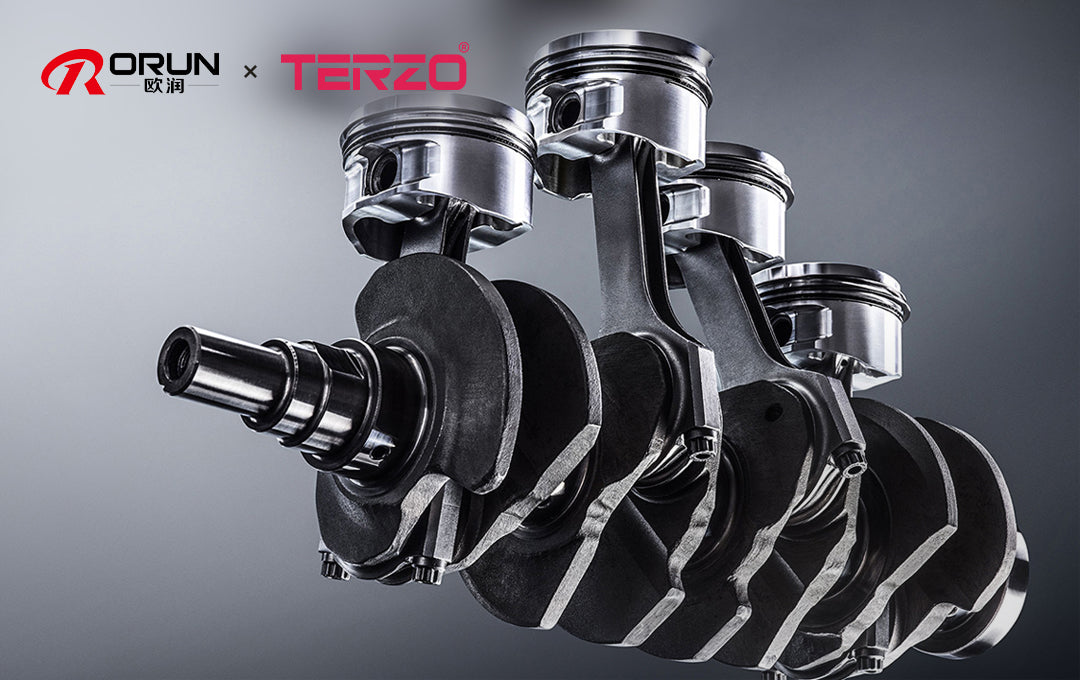
5W30 vs 5W40 Motor Oil: Key Differences & Which to Choose
Hey there, gearheads and daily drivers alike—ever found yourself staring at the oil shelf,

squinting at "5W30" and "5W40" like they’re ancient hieroglyphs? You’re not alone. These two motor oils are the heavy hitters in the automotive world, but figuring out which one your ride actually needs? That’s trickier than parallel parking in a tight spot. Let’s cut through the confusion and break down 5W30 vs 5W40—no fancy jargon, just straight talk.
What’s the Big Deal About 5W30 and 5W40 Anyway?
Motor oil’s main job? Keep your engine from turning into a metal scrap heap. It lubes up moving parts, fights friction, and keeps things running smooth. But with so many options, 5W30 and 5W40 often end up as the “final two” in the oil aisle showdown. Both have their fans, but they’re far from twins. Let’s dig into what makes each tick.
5W30: The Jack-of-All-Trades
If motor oils were students, 5W30 would be the overachiever with a 4.0. It’s the go-to for most modern cars—gas, diesel, even some high-mileage rides. Here’s why it’s a crowd-pleaser:
- Smooth Operator: It glides over engine parts like butter on warm toast, keeping friction low so your engine doesn’t work harder than it needs to.
- Fuel Saver: Thanks to clever additives (looking at you, Amsoil 5W30 LS), it helps your car sip gas instead of chugging it. Your wallet (and the planet) will thank you.
- Versatile Beast: Whether you’re cruising the highway or tackling stop-and-go traffic, 5W30 keeps up. It’s even approved for a bunch of diesel engines—no small feat.
5W40: The Heavy-Duty Contender
Now, 5W40 is like that trusty pickup truck—built tough, ready for heavy lifting. It’s often the pick for cars under warranty or those with high-stress engines (think towing, racing, or daily commutes in stop-and-go chaos). Key perks:
- Diesel Darling: It plays nice with both unleaded and leaded gas, but really shines in diesel engines where things get hot and heavy.
- Heat Resistant: Unlike some oils that thin out when the temp rises, 5W40 stays thick enough to protect. Perfect for engines that run hotter than a summer day.
-
Warranty-Friendly: Many manufacturers swear by it, so if your car’s still under warranty, this might be the safe bet.

5W30 vs 5W40: The Showdown
Alright, let’s get into the nitty-gritty. What actually sets these two apart? Spoiler: It’s not just about the numbers on the bottle.
Viscosity: Thickness Matters
Viscosity is basically how “thick” the oil is—think honey (slow-moving) vs. water (zippy). 5W30 has a lower viscosity range (9.3-12.5 mm²/s) compared to 5W40 (12.5-16.3 mm²/s). Translation? 5W30 flows easier, which is great for cold starts (more on that later) and fuel efficiency. 5W40, being thicker, sticks around better in high-heat situations.
Fuel Economy: Who Saves More?
If you’re tired of watching gas prices climb, 5W30’s your new best friend. Its thinner formula means less drag on the engine, so your car uses less fuel. 5W40? It’s better at handling heat, but that extra thickness can cost you a few MPGs.
Price: Is Cheaper Always Better?
Here’s the kicker: 5W30 often costs more than 5W40. But before you balk, remember—higher price usually means better additives (cleaners, anti-wear protectants) that keep your engine running longer. Think of it as an investment in your car’s future.
Temperature Range: Hot or Cold?
Both handle -25°C to 35°C like pros, but 5W30’s lower viscosity makes it a star in cold weather. It flows faster on startup, preventing that “dry start” damage. 5W40? It’s more of a summer hero, holding up better when the mercury rises.
So… Which One Should You Pick?
Let’s keep it real: There’s no one-size-fits-all answer. But here’s a quick cheat sheet:
- Go with 5W30 if: You drive a modern gas/diesel car, care about fuel efficiency, or live in a place with cold winters. It’s versatile, affordable (in the long run), and gentle on your engine.
- Stick with 5W40 if: You’ve got a high-performance engine, tow heavy stuff, or your car’s under warranty (check the manual—manufacturers love this one). It’s tougher, but it’ll cost you a bit more at the pump.
Pro tip: Always check your owner’s manual first. Your car’s engine is like a picky eater—it knows what it likes. Mixing oils? Don’t do it. At least, not more than once in a pinch. Oil blends can mess with viscosity, and your engine will notice.
FAQs
Q: Can I use 5W40 instead of 5W30?
A: Maybe—if your car’s older or doesn’t have fancy variable valve timing. But modern engines? Stick to the manual. Thick oil might gum up those sensitive parts.
Q: Is 5W30 better for winter?
A: Yep. Its thinner formula flows faster in cold starts, so your engine warms up quicker and runs smoother. 5W40’s thicker, so it’s better suited for warmer climes.
Q: What’s that “W” stand for anyway?
A: “Winter.” It tells you how the oil performs in cold temps. Clever, right?
Wrapping It Up: The Verdict
In the 5W30 vs 5W40 ring, 5W30 lands more punches. It’s fuel-efficient, versatile, and gentle on your engine—especially if you’re not towing race cars for a living. But if your ride’s a high-strung beast or you’re under warranty, 5W40’s got your back.
Next time you’re at the auto shop, skip the stare-down. Grab 5W30, check your manual, and hit the road. Your engine (and your wallet) will thank you.




